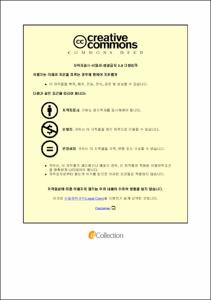The Biomechanical analysis of arm swing during gait in the elbow stiffness
- Abstract
- Background and purpose: The arm swing plays a role in gait by assisting the forward movement with the maintenance of the trunk balance. This study evaluates the biomechanical characteristics of the shoulder and elbow and their alteration in elbow stiffness.
Materials and methods: The study included (1) biomechanical analysis and (2) computational musculoskeletal modeling based on motion tracking. This biomechanical study included eight fresh frozen specimens from individuals of both genders. Analysis was performed using Tekscan, and biomechanical analysis was performed with a custom-designed jig system with gravity-assisted muscle contracture. Fifteen participants without musculoskeletal or gait disorders were included for computational modeling. Three-dimensional (3D) motion tracking system using three Azure Kinect was used to obtain information for the 3D location of each joint. Computational modeling using The AnyBody Modeling System was performed to calculate the joint moment and range of motion during the arm swing of the gait.
Results: In biomechanical study, stage 2 contact pressure was significantly increased compared with stage 0 (mean contact pressure in the resting position, P<0.0001; mean contact pressure in the passive swing, P=0.039; peak contact pressure in the passive swing, P <0.007). In the computational modeling results, the elbow range of motion (ROM) of flexion–extension in stages 1 and 2 was significantly increased compared with stage 0 in the nondominant arm as the control group (stage 0 vs 1, P <0.001; stage 0 vs 2, P=0.008). Shoulder ROM of flexion–extension in stage 2 was significantly increased compared with stage 0 (stage 0 vs 2 in dominant, P<0.001; stage 0 vs stage 2 in nondominant, P<0.001). The joint moment of the elbow in flexion–extension was significantly increased in stages 1 and 2 compared with stage 0 in the dominant arm (stage 0 vs 1, P=0.029; stage 0 vs 2, P<0.001) and in the nondominant arm (stage 0 vs 1, P=0.001; stage 0 vs 2, P<0.001). The joint moment of shoulder in flexion–extension in stage 2 was significantly increased compared with stage 0 in the dominant (stage 0 vs 1, P=0.569; stage 0 vs 2, P=0.005) and nondominant (stage 0 vs 1, P=0.039; stage 0 vs 2, P=0.015) arms.
Conclusions: The elbow bears the load created by gravity and muscle contracture in the resting and dynamic arm swing movement. Elbow joint stiffness increases the load-bearing in the resting position and the dynamic arm swing motion. The ipsilateral and contralateral shoulder joint seems to compensate for the decreased elbow motion by increasing the ROM of the shoulder joint. Therefore, the moment of both shoulder joints was also increased.
Clinical relevance: The current study showed that elbow stiffness should be managed not only for pain relief and limited motion but also to delay the arthritic process.
- Issued Date
- 2021
- Awarded Date
- 2021-08
- Type
- Dissertation
- Alternative Author(s)
- Jae-Man Kwak
- Affiliation
- 울산대학교
- Department
- 일반대학원 의학과
- Advisor
- 전인호
- Degree
- Doctor
- Publisher
- 울산대학교 일반대학원 의학과
- Language
- eng
- Rights
- 울산대학교 논문은 저작권에 의해 보호받습니다.
- Appears in Collections:
- Medicine > 2. Theses (Ph.D)
- 파일 목록
-
-
Download
 200000507968.pdf
기타 데이터 / 4.33 MB / Adobe PDF
200000507968.pdf
기타 데이터 / 4.33 MB / Adobe PDF
-
Items in Repository are protected by copyright, with all rights reserved, unless otherwise indicated.